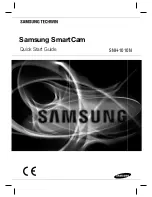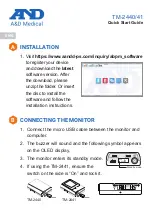
84
8012426/YWL2/3-0/2016-08| SICK
O P E R A T I N G I N S T R U C T I O N S | DUSTHUNTER SP100
Subject to change without notice
5
MAINTENANCE
5.2
Maintenance on the sender/receiver unit
Clean the outside of the sender/receiver unit in regular intervals. Remove deposits with
water or mechanically using suitable auxiliary means.
Clean the optical interfaces when deposits can be seen or before contamination reaches
the 30% warning limit value (40% for failure).
5.2.1
Cleaning the optics of the sender/receiver unit
Sender/receiver unit with NL up to 735 mm
▸
Loosen knurled screws (1) and pull the electronics unit with probe carefully out of probe
flange (2
see “Cleaning the optical interfaces”, page 85
▸
Close the probe flange with a cover (
▸
Loosen fastening screws (3) for cover (4) and take off cover.
▸
Clean the optics carefully with cotton swabs and, if necessary, light trap (5) as well.
Sender/receiver unit with NL > 735 mm or for internal duct pressure up to +200 kPa
▸
Remove the sender/receiver unit from the duct.
▸
Close off the flange with tube with a blind flange.
▸
Unscrew cover screw (6) from the cleaning opening for sender optics (
▸
Loosen fastening screws (3) for cover (4) and take off cover.
▸
Clean the optics carefully with cotton swabs and, if necessary, light trap (5) as well.
NOTE:
▸
Do not damage any device parts during maintenance work.
▸
Do not interrupt the purge air supply.
If contamination on the glass surfaces cannot be removed with the optics cloth, clean
the glass surfaces with soap suds and then dry.
WARNING: Hazard through gas and hot parts
Dismantle the sender/receiver unit from the duct for cleaning and then fit it back on
again.
▸
Observe the relevant safety regulations as well as the safety notices (
) during all work.
▸
Only carry out assembly work on equipment with hazard potential (higher internal
duct pressure, hot or aggressive gases) when the equipment is at a standstill.
▸
Take suitable protection measures against possible local hazards or hazards arising
from the equipment.
















































